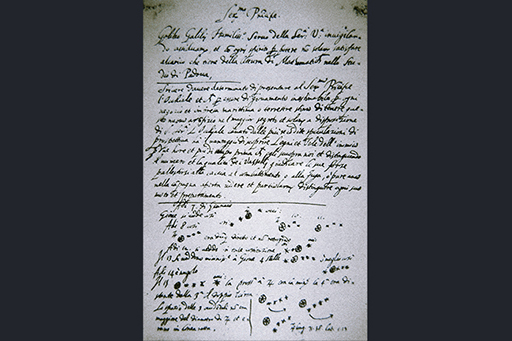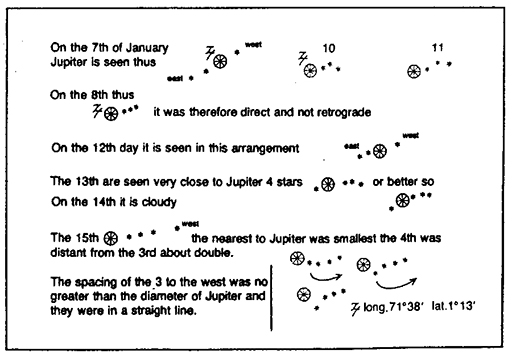2 Discovery of Europa
Explore Europa, Jupiter’s icy moon that probably has an ocean below the surface. Could there be life there?
Europa was discovered by the astronomer Galileo Galilei in 1610, at the same time as he discovered Ganymede, Callisto and Io. Equipped with just a very basic telescope, Galileo noticed points of light around Jupiter that looked like stars, but that changed their positions relative to the planet on successive nights. Galileo recorded their changing positions and concluded that the objects must be moons orbiting the planet. This challenged the accepted idea at the time that the Earth was the centre of everything and that all the observable objects in the sky were orbiting the Earth.
Sadly the page illustrated here, that was believed to be genuinely from Galileo’s journal for nearly 90 years, was revealed in 2022 to be almost certainly a 20th century forgery. (You can read the story here [Tip: hold Ctrl and click a link to open it in a new tab. (Hide tip)] .) Although it does represent the essence what we still believe to have been Galileo’s observations and thoughts.


